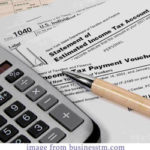
Creating a mileage log for business use is critical in preparing your taxes. Your mileage log must contain odometer readings, a detailed record, and the dates of business trips. A mileage log is the best way to avoid the tax penalties associated with incomplete or inaccurate mileage logs. If you have no idea where to begin, start with an online mileage tracker.
Track your business driving with a digital mileage log
A digital mileage log can be an invaluable tool for tracking business driving. Manual mileage logbooks require drivers to record every mile by hand. However, this method has many problems. For example, errors can occur when the driver fails to enter the correct mileage into the logbook. The result is inaccurate reimbursements, costing companies thousands of dollars per employee and millions per year. Manual processes, such as using paper logbooks, also leave room for error because drivers must manually input information from the mileage logbook into Excel. Thankfully, modern digital mileage logs offer many benefits. You may visit https://mileiq.com/ for more details.
A digital mileage log is helpful in many other ways, too. Keeping up with it is essential, as it is easy to become distracted or forget to fill out your log. A reminder can be set up on your phone as a Google Calendar notification or placed in your car’s glove box. Using the log to create and submit tax returns is even possible. In addition, if you use your vehicle to conduct business, a digital log is essential for managing expenses and earnings tax returns.
Keep a detailed record.
Employees must maintain accurate records of business miles logged to file a return with the IRS. This information can be in paper format or electronic, such as a CSV file or Excel document. Whatever form you choose, your records must be complete and accurate. Employers should explain what type of records they require to ensure compliance with the law. You should also inform your employees about the necessity of maintaining these records.
If you are responsible for ensuring that all employees comply with mileage log requirements, you can purchase a mileage logbook or use a spreadsheet. Be sure to include space for other expenses, such as tolls and tickets. After a year, you should transfer your paper logbook to a digital platform to avoid future difficulties. If you want to submit a paper mileage log, you should make copies of the records for three years.
Provide odometer readings
While keeping a mileage log is nothing new, the tools available to keep track of your business’s driving have grown. Nowadays, mileage logs store information such as trip dates, business purposes, origin and destination, and driving miles. Mileage logs are still an option for companies, but they must understand how important it is to keep track of mileage and its impact on the business.
One of the most critical elements of a mileage log is the odometer readings. Although odometer readings are not entirely accurate, they are close to the actual mileage traveled. According to the Society of Automotive Engineers, the maximum margin of error is four percent. Yet, a report by FOX19 showed that four of the five vehicles on the test tracker had inaccurate odometer readings.
Maintain a three-year record
Keeping a three-year record of your mileage log is essential for tax purposes. The IRS requires businesses to keep records for at least three years. If an employee provides the log to their employer for reimbursement, they are not required to retain a copy. However, the employer must keep records for at least three years after the year they filed their taxes. If the employee loses the mileage log, proving that the payment was not income may be challenging.
The IRS will not look kindly on an approximation and expect the mileage log to be accurate. So, maintain a three-year mileage log record and use a computer program. You may also want to keep a mileage log in a notebook or spreadsheet. Whatever method you use, make sure to update it frequently. Keep a record for at least three years to avoid issues with the tax authorities.

